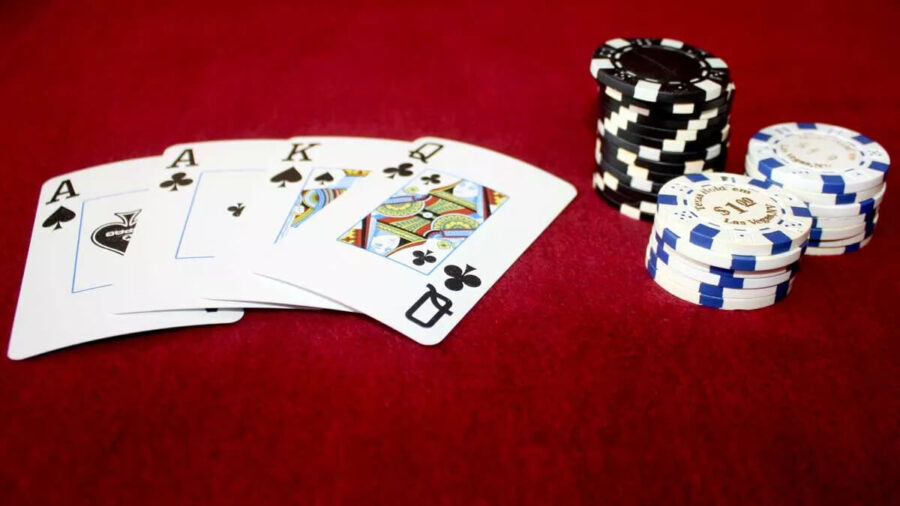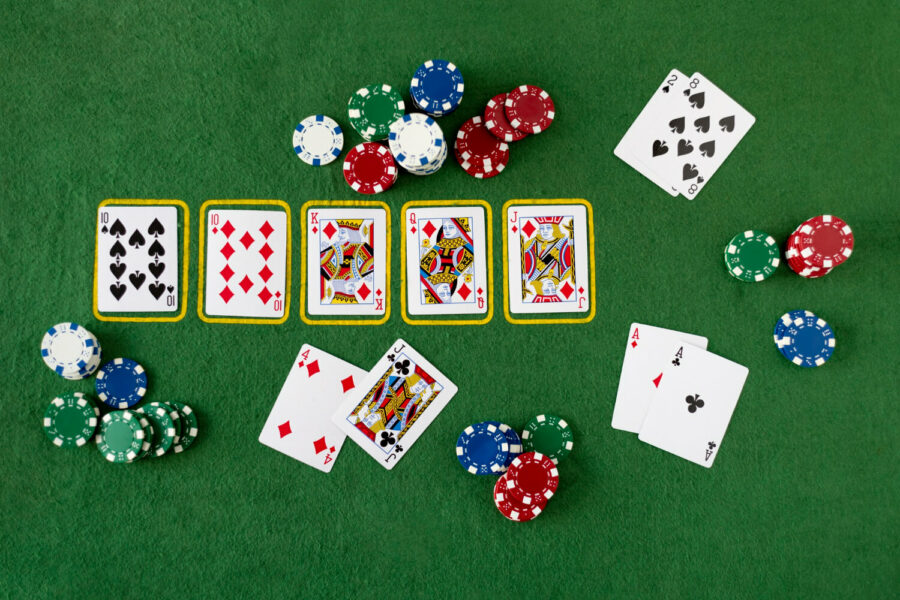How to Score Gin Rummy: A Comprehensive Guide

Gin rummy is a popular card game that requires skill, strategy, and a bit of luck. As players strive to create sets and runs of cards, one important aspect of the game is scoring. Understanding how scoring works in gin rummy is essential to determine the winner of each game. In this comprehensive guide, we will delve deep into the scoring process of gin rummy, including the rules, point values, strategies, advanced techniques, and common mistakes to avoid. Whether you are new to the game or a seasoned player looking to enhance your skills, this guide will provide you with the knowledge and tactics to excel in scoring gin rummy.
Gin Rules: A Brief Overview
Before delving into the intricacies of scoring, let’s cover a brief overview of the basic rules of gin rummy. Gin rummy is played with a standard 52-card deck without the use of jokers. The objective of the game is to create melds, which consist of sets or runs of cards. A set is composed of three or more cards of the same rank, while a run is made up of three or more consecutive cards of the same suit.
The game progresses by drawing and discarding cards, with players aiming to form melds and minimize the number of unmatched cards, also known as deadwood. The ultimate goal is to create high-value melds while reducing deadwood to score more points than your opponent.
Rules of Gin Rummy with 2 Players
When playing gin rummy with two players, specific rules come into play to ensure smooth gameplay. Here’s a detailed look at the rules for playing gin rummy with two players:
1. Each player is dealt 10 cards at the start of the game, which are alternately dealt by the dealer. The remaining cards are placed facedown to form the stockpile.
2. The top card from the stock pile is turned face-up to create the discard pile.
3. Players take turns, starting with the non-dealer, either drawing a card from the stock pile or the top card of the discard pile.
4. After drawing a card, players must discard one card face-up onto the discard pile. The discarded card must be different from the card drawn from the stockpile or the top card of the discard pile.
5. The game continues with players alternately drawing and discarding cards, working towards forming melds.
6. The round ends when one player knocks or “goes gin.” To knock, a player must have minimal deadwood in their hand and can declare the end of the round. If a player “goes gin,” it means they have managed to use all the cards in their hand to form melds, without any remaining deadwood.
See also: how to play poker
Gin Rummy: How Many Cards to Start With
In the standard version of gin rummy, each player starts with a hand of 10 cards. The dealer shuffles the deck and deals 10 cards alternately to each player. The remaining cards are placed facedown in the center of the table to form the stockpile. The top card from the stock pile is turned face-up to start the discard pile.
However, it’s worth noting that there are variations of gin rummy that may have different starting card counts. Some variations may use seven cards, nine cards, or even more, depending on the chosen rules. It’s essential to clarify the number of cards to start with before commencing the game.
How Do You Win Gin Rummy: The Objective of the Game
The objective of gin rummy is to score more points than your opponent. Points are earned by creating melds and minimizing the card value of unmatched cards in your hand, also known as deadwood.
A game of gin rummy typically consists of multiple rounds or hands. The game continues until either a predetermined number of points is reached, or a specific number of rounds are played. The player who reaches the agreed-upon point total first or has the highest score at the end of the designated rounds wins the game.

How to Keep Score in Gin Rummy: Step-by-Step Guide
Keeping score in gin rummy involves adding up the value of cards in each player’s hand and awarding points accordingly. Let’s take a step-by-step look at the process of keeping score in gin rummy:
1. At the end of each round or hand, players separate their melds (sets and runs) from their unmatched cards (deadwood).
2. Face cards (Jacks, Queens, and Kings) carry a value of 10 points each. Aces are worth 1 point, while numbered cards have the same point value as their face value (e.g., a 2 of Hearts is worth 2 points).
3. Add up the point values of the unmatched cards in each player’s hand. This total is known as the deadwood count.
4. The player with the lower deadwood count scores the difference between the deadwood counts of the two players. For example, if Player A has 8 points of deadwood and Player B has 12 points of deadwood, Player A scores 4 points (12-8).
5. Additionally, if a player “goes gin” by using all cards in their hand to create melds without any remaining deadwood, they score a gin bonus. The gin bonus is a fixed number of points, commonly agreed upon before the start of the game, such as 25 points.
6. If a player knocks, meaning they end the round with a hand that contains minimal deadwood, they score the difference between the deadwood counts of the two players, plus a knock bonus. The knock bonus is an additional fixed number of points awarded to the player who knocks, often agreed upon before the game starts (e.g., 10 points).
7. The player who wins the round scores the points mentioned above, while the opponent scores the deadwood count of their unmatched cards.
8. After scoring, the accumulated points are tallied, and the next round begins.
See also: how to be a Poker Dealer: The Ultimate Guide
Strategies to Maximize Your Score in Gin Rummy
To maximize your score in gin rummy, employ strategic gameplay and tactics. Here are some key strategies to consider:
1. Arrange your cards strategically: As you receive new cards, try to organize them in a way that allows you to create melds quickly. Group cards of the same rank or suit together to identify potential meld combinations.
2. Observe your opponent’s discards: Pay careful attention to the cards your opponent discards. This can provide valuable insights into the melds they are attempting to create, as well as hint at the cards they don’t need. Be mindful of the cards you discard to avoid inadvertently helping your opponent by discarding a card they need.
3. Keep track of the cards played: Memorize the cards that have been played to improve your chances of creating useful melds. Knowing which cards are no longer available can guide your strategy and help you make more strategic choices when drawing and discarding.
4. Aim for a complete gin: Whenever possible, strive to “go gin” by using all the cards in your hand to form melds without any remaining deadwood. Going gin not only ensures a significant score boost but also prevents your opponent from scoring any points in that round.
5. Strategic knocking: If you have minimal deadwood but haven’t formed melds to go gin, consider knocking. To knock, your deadwood count should be lower than or equal to the opposing player’s deadwood count. Knocking prematurely may result in giving up potential points, so weigh the risks before making this decision.
6. Defensive play: Discard cards that are less beneficial to your opponent’s potential melds. By denying your opponent the cards they need, you reduce their chances of creating high-scoring melds, thus minimizing their potential score.
By implementing these strategies, you can increase your chances of maximizing your score and outperforming your opponents in gin rummy.
How to Play Gin Rummy: Easy Instructions for Beginners
For beginners, learning how to play gin rummy can be a bit overwhelming. However, with practice and guidance, the game becomes more accessible. Here are easy-to-follow instructions for playing gin rummy:
1. Begin by shuffling the deck of cards thoroughly and dealing ten cards to each player. If playing with a larger group, consider adjusting the number of cards dealt accordingly.
2. Place the remaining cards facedown in the center of the table to form the stockpile. Turn the top card from the stock pile face-up to create the discard pile.
3. Take turns drawing cards, either from the stockpile or the top card of the discard pile. To draw, pick up a card and add it to your hand.
4. As you collect cards, aim to form melds of sets or runs. A set consists of three or more cards of the same rank, while a run consists of three or more sequential cards of the same suit.
5. Discard unwanted cards from your hand by placing them face-up onto the discard pile. Be thoughtful in your discards, as they may be of value to your opponent.
6. Continue taking turns, drawing and discarding cards, until a player either knocks or goes gin.
7. To knock, end the round by placing your cards face-down on the table and declaring “knock.” Your deadwood count should be lower or equal to your opponent’s deadwood count.
8. After a player knocks, both players reveal their hands, and the scoring process begins.
9. The round concludes with the player who knocked scoring points based on the deadwood difference and the knock bonus. Points are also awarded for the gin bonus if a player went gin.
10. Repeat the process, playing multiple rounds until a predetermined target score is reached or a designated number of rounds is completed. The player with the highest score wins the game.
How to Play Gin Rummy with 4 Players: Game Variations
While we primarily focused on the two-player variant of gin rummy, the game is flexible and can be enjoyed with more players. In the four-player variation, players can form partnerships and compete against each other. The rules and scoring remain similar to the two-player version, with added communication and strategy between partners. The gameplay progresses with alternating turns between teams, providing a dynamic and engaging experience. The winners are determined based on their combined scores, considering both individual and partner performance.

Instructions on How to Play Gin Rummy: A Detailed Breakdown
For a more detailed breakdown of how to play gin rummy, navigate to the provided external links. These resources offer comprehensive guides, including rules, strategies, and step-by-step explanations to help you grasp the game’s nuances and become a skilled player.
Common Mistakes to Avoid in Gin Rummy
To further enhance your understanding of scoring gin rummy, let’s discuss some common mistakes players make and how to avoid them:
1. Misjudging the deadwood count: One common error is incorrectly assessing the deadwood count in your hand. To avoid this, carefully calculate the point value of each unmatched card and ensure your count is accurate.
2. Overlooking potential melds: Focusing only on reducing deadwood without considering potential meld combinations can result in missed scoring opportunities. Always be on the lookout for possible melds and prioritize creating high-scoring combinations.
3. Failing to adapt strategies: Adapting your strategies based on your opponent’s gameplay is essential. Pay attention to their discards, melds, and overall gameplay to adjust your approach accordingly. Flexibility is key to success in gin rummy.
4. Giving unnecessary information through discards: Remember that your discards can provide valuable information to your opponent. Be mindful of the cards you discard, ensuring they do not inadvertently help your opponent create beneficial melds.
5. Discarding high-value cards recklessly: Be cautious when discarding high-value cards, as they can be valuable in creating melds later on. Strategic planning regarding which cards are safe to discard and which ones should be held can greatly impact your scoring potential.
By being aware of these common mistakes, you can improve your decision-making and play a more strategic game of gin rummy.
Scoring in gin rummy is a crucial element that determines the winner of each round and the overall game. By understanding the rules, point values, and scoring strategies, you can become a formidable opponent and maximize your score in gin rummy. Remember to practice regularly to enhance your skills and develop a deeper understanding of the game. Enjoy the thrill of the game as you strategize, form melds, and aim for the highest score in gin rummy!
See also: how to Play 3 Card Poker











